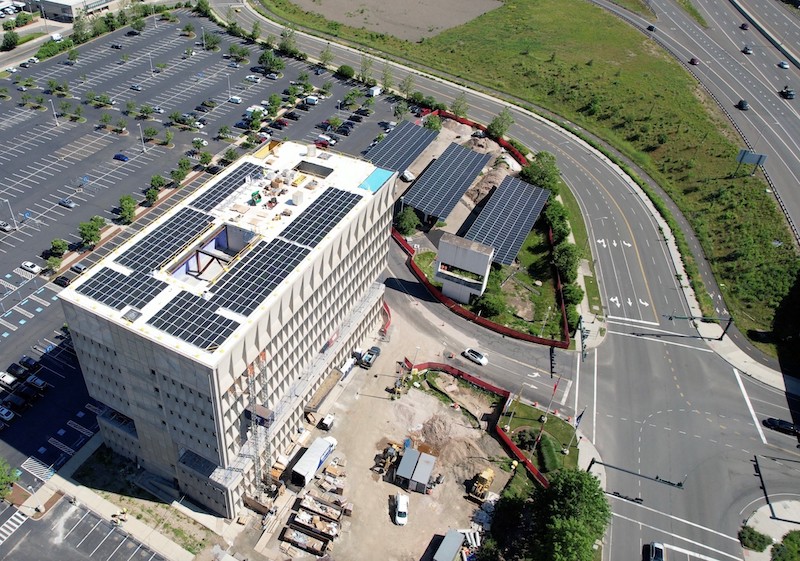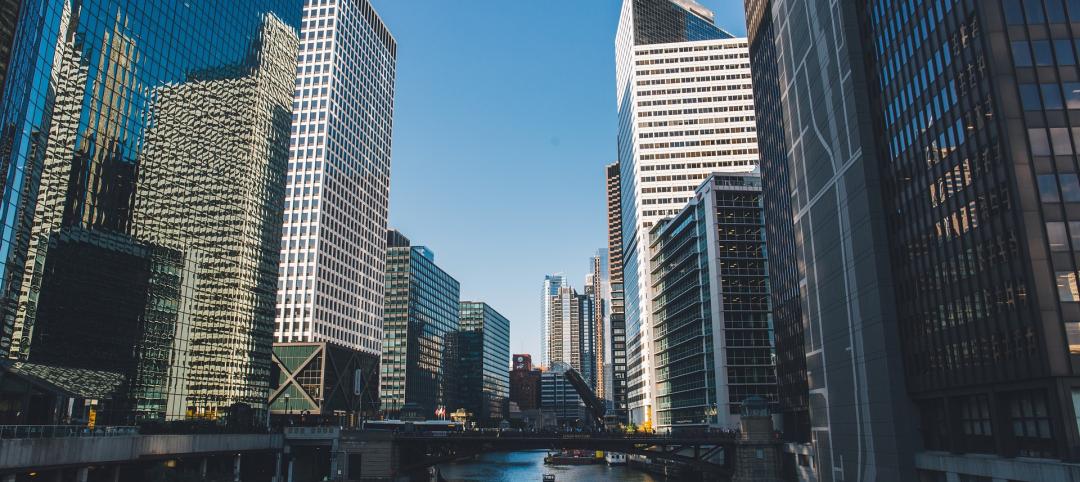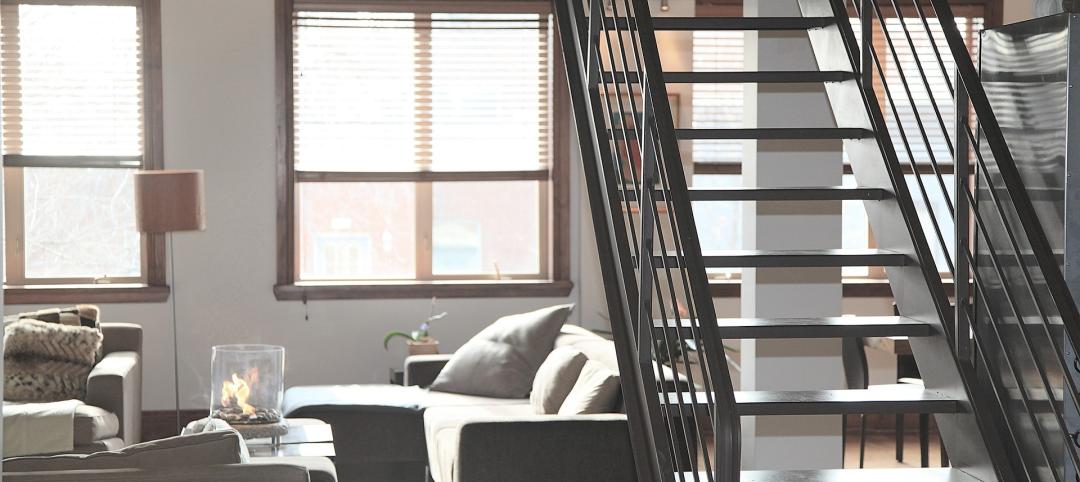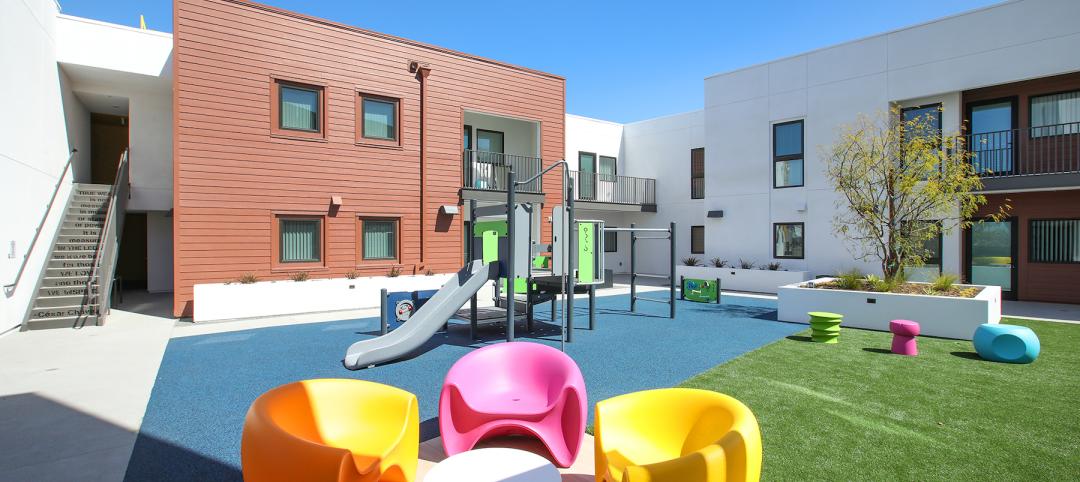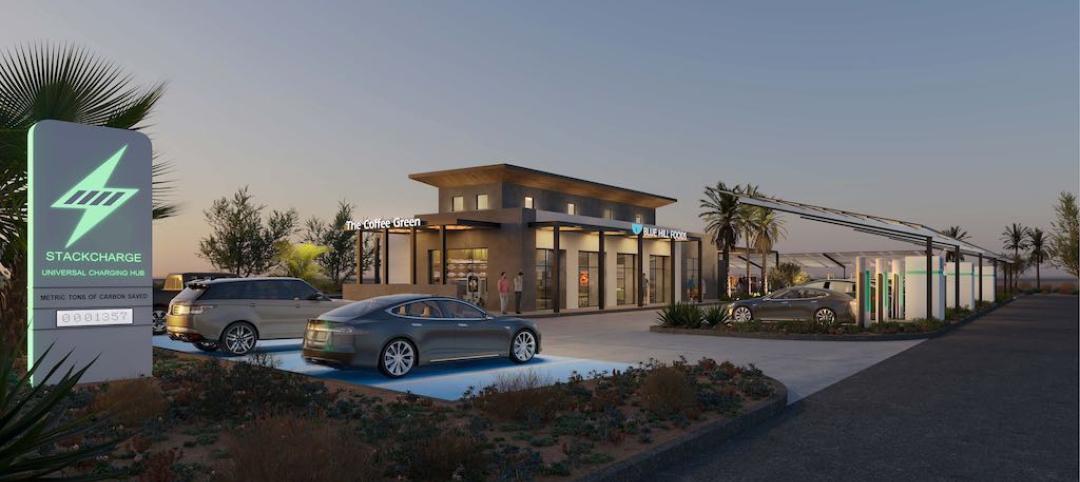Sometime in late Spring of next year, the Hotel Marcel in New Haven, Conn., is scheduled to open. This 110,000-sf, 165-room hotel is being touted by its developer as the first net-zero carbon hotel in the U.S., and its transformation is guided by Passive House and LEED Platinum certification standards.
The former Pirelli Building—named after the famed tire company that bought it as part of Pirelli’s acquisition of Armstrong Tire—was designed in 1967 in the Brutalist style by architect Marcel Breuer. The furniture retailer IKEA, which operates a warehouse right next door, bought the building in 2003, but never used it. In 2018, the city granted permission to repurpose the building—located within New Haven’s Long Wharf district and two miles from Yale University—as a hotel.
The developer Becker + Becker Associates purchased the property—which is listed on the National Historic Register—in January 2020 for a reported $1.2 million. The firm’s President, Bruce Redman Becker, FAIA, AICP, LEED AP, is also the architect on this $50 million restoration project, which will be operated by Chesapeake Hospitality and fall under Hilton’s Tapestry Collection brand. Ten percent of the hotel’s furnishings, including kitchen and vanity countertops, is being supplied by IKEA. The project’s interior designer is Dutch East Design.
DESIGN-BID-BUILD, BUT WITH MORE COLLABORATION
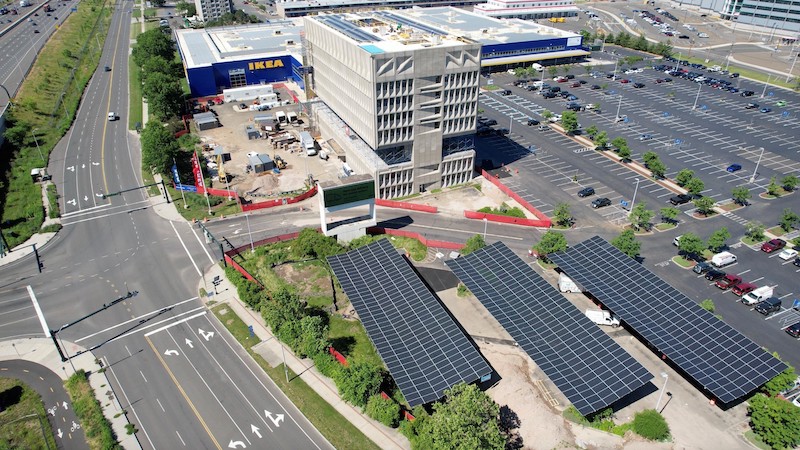
The furniture retailer IKEA owned the Pirelli Building for decades, but never put it to use.
Becker’s interest in sustainable design dates back decades. In 2004, he initiated the “Energy Efficient Housing Technical Correction Act” with New York Congresswoman Carolyn Mahoney. Becker also designed and developed the first two apartment buildings in the U.S. to be powered and heated by a fuel cell.
That latter work drew the attention of the national contractor Consigli, which is serving as Construction Manager for the Hotel Marcel’s adaptive reuse and historic rehabilitation.
“It was a unique challenge to have a relationship with an architect-owner, and to work collaboratively on design details as they came up,” says Aaron Krueger, LEED AP, Project Manager for Consigli, whom BD+C interviewed with Steven Burke, LEED and WELL Faculty, CPHC, Consigli’s Director of Sustainability.
Consigli came on board in 2019, recalls Krueger, when Becker was looking for a preconstruction partner. Consigli worked with the developer on budgeting as well. (Procurement for this project was unusual, says Krueger, in that Becker himself bought the 1,072 solar panels that will power the hotel from their perches on its roof and parking structure; as well as the building’s windows, which were subject to approval along historic criteria.)
Burke says that, prior to its involvement in Hotel Marcel, Consigli had worked on projects powered by renewable energy before: it currently has eight projects being built to achieve net-zero carbon, and six being built to Passive House standards. (Because Hotel Marcel is a retrofit, its Building Team has been following the International Passive House standard.)
SETTING THE BAR FOR HOTEL ENERGY EFFICIENCY
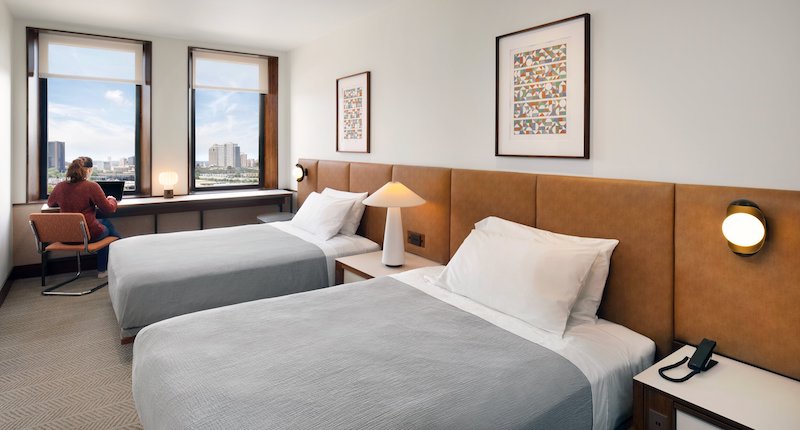
The Hilton Tapestry-branded Hotel Marcel will offer 165 rooms and suites.
The solar arrays will provide 100% of Hotel Marcel’s electricity for lighting, heating, and cooling. The hotel will include among its amenities 12 on-site Tesla superchargers for electric vehicles. Other sustainable features include Mitsubishi variable refrigerated flow air-source heat pumps, an energy recovery system, and recycled and local construction materials. All lighting will be low-voltage power-over-ethernet LED technology. Energy Use Intensity Rating is projected to be 34 kBtu/ft^2, which is 80% less energy than median EUI for hotels in the United States.
All told, Hotel Marcel is aiming to be 60% more energy efficient than code requirements. To hit that target, the Building Team applied spray foam insulation to seal and increase the R-value of the structure’s exterior, which was tricky, says Krueger, because historic preservation requirements limited the extent to which the building’s precast panels could be altered. (Steven Winter Associates is this project’s engineering consultant, and will conduct a whole-building air-barrier test upon completion of this rehabilitation.)
Some of the project’s other challenges included the fact that the building “was filled with hazardous materials, and there was little access to the inside, which really wasn’t abated until last summer,” says Krueger.
Once completed, the building’s penthouse will serve as a 7,000-sf event space for the hotel. Consigli, says Burke, hopes this project becomes an example for future historic restorations that are economically feasible to execute.
Related Stories
Giants 400 | Feb 6, 2023
2022 Reconstruction Sector Giants: Top architecture, engineering, and construction firms in the U.S. building reconstruction and renovation sector
Gensler, Stantec, IPS, Alfa Tech, STO Building Group, and Turner Construction top BD+C's rankings of the nation's largest reconstruction sector architecture, engineering, and construction firms, as reported in the 2022 Giants 400 Report.
Multifamily Housing | Jan 23, 2023
Long Beach, Calif., office tower converted to market rate multifamily housing
A project to convert an underperforming mid-century office tower in Long Beach, Calif., created badly needed market rate housing with a significantly lowered carbon footprint. The adaptive reuse project, composed of 203,177 sf including parking, created 106 apartment units out of a Class B office building that had been vacant for about 10 years.
Adaptive Reuse | Jan 12, 2023
Invest in existing buildings for your university
According to Nick Sillies of GBBN, students are increasingly asking: "How sustainable is your institution?" Reusing existing buildings may help answer that.
Government Buildings | Jan 9, 2023
Blackstone, Starwood among real estate giants urging President Biden to repurpose unused federal office space for housing
The Real Estate Roundtable, a group including major real estate firms such as Brookfield Properties, Blackstone, Empire State Realty Trust, Starwood Capital, as well as multiple major banks and CRE professional organizations, recently sent a letter to President Joe Biden on the implications of remote work within the federal government.
Adaptive Reuse | Dec 21, 2022
University of Pittsburgh reinvents century-old Model-T building as a life sciences research facility
After opening earlier this year, The Assembly recently achieved LEED Gold certification, aligning with the school’s and community’s larger sustainability efforts.
Adaptive Reuse | Dec 9, 2022
What's old is new: Why you should consider adaptive reuse
While new construction allows for incredible levels of customization, there’s no denying that new buildings can have adverse impacts on the climate, budgets, schedules and even the cultural and historic fabrics of communities.
Mixed-Use | Dec 6, 2022
Houston developer plans to convert Kevin Roche-designed ConocoPhillips HQ to mixed-use destination
Houston-based Midway, a real estate investment, development, and management firm, plans to redevelop the former ConocoPhillips corporate headquarters site into a mixed-use destination called Watermark District at Woodcreek.
Multifamily Housing | Nov 29, 2022
Number of office-to-apartment conversion projects has jumped since start of pandemic
As remote work rose and demand for office space declined since the start of the Covid-19 pandemic, developers have found converting some offices to residential use to be an attractive option. Apartment conversions rose 25% in the two years since the start of the pandemic, with 28,000 new units converted from other property types, according to a report from RentCafe.
Multifamily Housing | Aug 17, 2022
California strip mall goes multifamily residential
Tiny Tim Plaza started out as a gas station and a dozen or so stores. Now it’s a thriving mixed-use community, minus the gas station.
Urban Planning | Jul 19, 2022
The EV charger station market is appealing to investors and developers, large and small
The latest entry, The StackCharge, is designed to make recharging time seem shorter.


